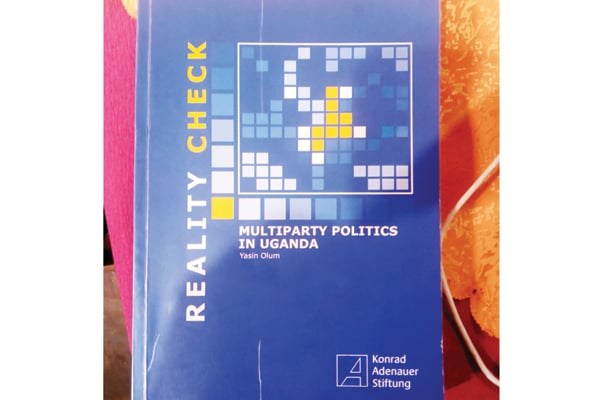Prime
Is multiparty democracy in Uganda more apparent than real?

What you need to know:
- Maybe, it is time we returned to the drawing board, in order to decipher whether or not democracy in Uganda is a force or farce.
It only does it presents Ugandans with a Hobson’s choice- a choice with very little choice. It seems to serve as window dressing to a one-party dictatorship.
Maybe, it is time we returned to the drawing board, in order to decipher whether or not democracy in Uganda is a force or farce.
Prof Yasin Olum’s book Reality Check: Multiparty Politics in Uganda helps us do just that. The book has four main parts and 11 chapters.
Chapter seven, excuse my leapfrogging, addresses the commercialisation of elections in Uganda. It addresses money and campaigning, money and party competition and the remedies to money and campaigning.
Outside the use of violence or the threat of using of violence (largely by the state, on both scores), the monetisation of our politics is of primary concern. For it has priced Uganda out of the marketplace of ideas.
As long as you have money, you are viewed as a leader. Yet money politics not only fosters a plutocracy (rule of the rich), it breeds money laundering, bribery, vote selling and buying.
All these vices serve as virtues to prolonged incumbency, as well as a petrifying of existing wrongs, the author reveals.
“Those who win owing to the use of money become abusers of the political system because they are less concerned about people’s demands since they know that they came to power because of their money and not because of the genuine support of the people. In this sense the use of money dehumanises and demoralises the entire electoral process,” writes the author.
This statement alone sums up the perils of a political dispensation that has failed to dispense with the use of money in oiling electoral wheels that have long since come off due to the use of that money.
The dehumanisation is so real. Voters see candidates as meal tickets and candidates repay the compliment. As both are dehumanised by the proverbial 30 pieces that it takes to corrupt them, they become Judases to a country, where patriotism is fast becoming more about posture than principle.
The danger here is that people become commodities. As they are commodified, the label is more important than the labeled. So, what we call ourselves takes precedence over how we treat ourselves. It is in this environment that sectarianism festers.
After all, tribe is a label that was slapped upon us by colonial masters interested more in our enmity than amity.
It gets worse when one realises that the wars which killed more than a million during the Nigerian civil war, also known as the Biafran War, in 1967, and during the Rwandan genocide occurring between April 7 and July 19, 1994, were products of such ethnic animosity.
So, Uganda must tread very carefully here. In chapter nine, the book examines multiparty parliament. It covers the historical background of the Westminster model, the theory and role of the opposition, formal recognition of the opposition, the role of the opposition by parliament, caucusing in parliament and the independents in the Parliament of Uganda.
This is pertinent. This is not least because parliament is being used as a blunt instrument against the opposition. The author ably demonstrates how laws enacted by Parliament, such as the Anti-terrorism Act, are used to trammel any advances towards meaningful multipartyism.
“When Dr Kizza Besigye, President of FDC, declared his candidacy for president in 2001, he was arrested on grounds that he was the leader of the rebel Peoples Redemption Army,” Olum writes.
All told, this book is the perfect read for anyone who wants to understand democracy or the lack thereof, in Uganda.


